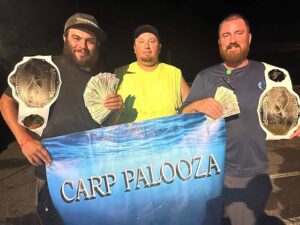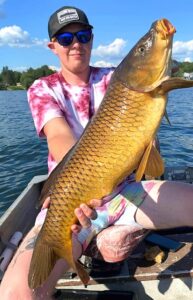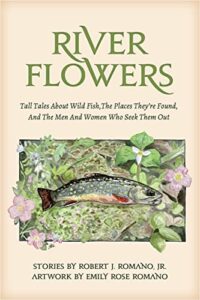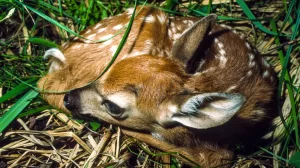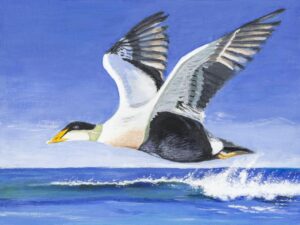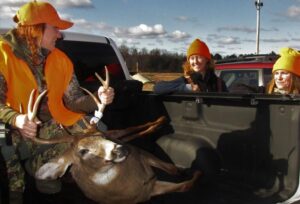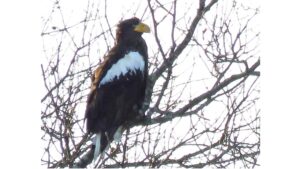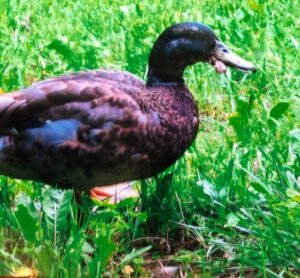The following information was gleaned from the June 22, 2022 Minutes of the Fish & Wildlife Board. They were approved at the July 18, 2022 Board Meeting. DFW Deer and Moose Biologist Martin Feehan provided much of the following data to the Board. Let’s start with the 2021 deer harvest figures.
The total statewide 2021 deer harvest was 13,363 indicating a 10.8% decline from the 2020 harvest of 14,766 which was an all-time record year. The minutes do not indicate a reason for the decline.
We didn’t do too bad here in Western Mass. The breakdown of our deer harvest (Zones 1 through 4) for 2021 and 2020 are as follows:
Zone 1- (2021) 356 vs (2020) 352; Zone 2- 531 vs 541; Zone 3- 549 vs 578; Zone 4N- 574 vs 611; and Zone 4S-364 vs 367. The total deer harvested for 2021was 2,374 vs 2,449 or a total drop of 75 deer.
Once again, there were more deer harvested statewide by archery than by shotgun or muzzleloader. The deer harvest by method of hunting was as follows: 6,432 were taken by archery, 4,282 by shotgun and 2,652 were taken by primitive firearms.
More than 3,000 of the deer taken in Zones 10 and 11 were taken by archers and that doesn’t include deer taken by archers in the shotgun and primitive firearms seasons which is legal. Probably the main reason is that those zones have high density human populations. Some towns may not allow hunting with firearms in their town/city limits, so some hunters went to the quieter way of hunting, archery. Just speculating.
Here in Western MA, it appears that we still like our shotguns. Of the 2,374, deer taken, 866 were by archery, 1,064 were by shotgun and 415 were by primitive firearms. Once again, we don’t know how many deer were taken by archers in the shotgun and primitive firearms season.
Feehan also noted that in-person biological deer checks resumed in 2021, and, to help illuminate trends, staff collected information used for modeling the abundance of deer in each Wildlife Management Zone (WMZ). Feehan stated that MassWildlife uses a Downing Reconstruction Model for harvest-based abundance estimates, noting that this method does not sample areas closed to hunting and that areas with significant closure are likely to have much higher deer abundance than harvest-based estimates would predict.
Feehan demonstrated through a sequence of graphs showing the DFW’s density estimates in each WMZ that some zones, including zones 2, 4N, and 4S, are maintaining densities well within the Board-approved statewide goal of 12-18 deer per square mile. But data from the other western zones –Zones 1 and 3 – are indicating that densities there are rising and are now slightly above the statewide goal. He demonstrated a similar analysis for Zones 5, 6, 7, 8, and 9, which showed that 5-8 are relatively stable, while Zone 9 is becoming increasingly similar to zones 10 and 11, which are above the statewide goal with high densities and showing persistent growth. Zone 12 is still relatively stable but increasing in density, and in zones 13-14, where densities are very high, the harvest is actually declining.
Given the trends revealed by these analyses and after reminding the Board that MassWildlife sets its Antlerless Deer Permit (ADP) allocations on the assumption that they will be kept stable for the ensuing 3 years so that effects on abundance can be thoroughly studied, Feehan reported that DFW staff proposed changes to the allocations for the next 3 years. (See chart)Antlerless permits 2022
He explained that the proposed allocations marked “No Cap” are functionally unlimited, being set well above the maximum number of ADP permits that are sold each year in those zones.
Mr Feehan’s recommendation for increasing the antlerless deer permits were unanimously approved by the Board.
As you can see, with the exception of Zone 4S, antlerless permits in all of the Wildlife Management Zones in Western Massachusetts will increase. Permits in Zone 1 went up by 100, Zone 2 went up by 40, Zone 3 went up by 150 and Zone 4N went up by 50. This is certainly good news for deer hunters wishing to supplement their meat diet with healthy venison.
Feehan had other interesting comments and recommendations which we will detail in next week’s column.as follows:
So, did you get a permit?
As of August 1, deer hunters can check to see if they were awarded an antlerless deer permit (doe permit). If you were awarded one, a $10 fee is charged. (Remember, the doe permit fee went up from $5 to $10 this year).
Bad then good news for hunting and show dog owners
Recently, Al Costa, President of the Berkshire Beagle Club informed me that a bill originally intended to address issues with boarding kennels has been expanded to a “meat-cleaver” approach that lumps all breeders into the same category as kennels that sell dogs to pet stores and wholesalers. Senate Bill 2994 was originally drafted to address a few issues concerning problems with doggy daycares that were highly publicized in recent years.
Unfortunately, Massachusetts Senators objected to the clear differences between boarding kennels, hobby breeding kennels and commercial dog breeding businesses. In their effort to “simplify the bill,” Senate Bill 2994 lumped them all together.
I wrote about that bill in this proposed column with the hopes that hunting dog owners would be outraged enough about it to contact their legislators.
Well, the following information was received from the Sportsmen’s Alliance of Massachusetts just before my deadline for submitting this column to the Eagle:
“
Legislation that lumped sporting dog kennels and hobby breeders in with large-scale commercial dog breeding operations died when the Massachusetts House of Representatives adjourned earlier this week. Senate Bill 1322, originally intended as a reform bill to address issues with boarding kennels, was turned into an attack on those who hunt, field trial and show dogs, but who do not breed dogs primarily for sale.”
“The Massachusetts Senate made last-minute changes to S.1322, in response to several high-profile issues at boarding kennels, requiring owners of personal kennels to be licensed and subject to inspections, even in their own homes. Current law recognizes the difference between those who breed dogs for commerce, and those who do so for hobby and sport. The bill would also have made personal kennel owners subject to any change in regulations at both the state and municipal government levels.”
“The Sportsmen’s Alliance alerted Massachusetts sportsmen and directly contacted members of the House of Representatives in opposition to S.1322 as part of a larger effort that included the American Kennel Club and local dog and sporting organizations. Together the effort prevailed as the lower chamber decided not to take up the Senate Bill, instead allowing it to die as the legislature adjourned for the remainder of the 2022 session.”
What is the Sportsmen’s Alliance? It protects and defends America’s wildlife conservation programs and the pursuits – hunting, fishing and trapping – that generate the money to pay for them. Sportsmen’s Alliance Foundation is responsible for public education, legal defense and research. Its mission is accomplished through several distinct programs coordinated to provide the most complete defense capability possible.
Thanks to those who jumped on this matter and contacted their legislators. Needless to say, I had no problem scrapping my old bad news article in favor of this good news one.
Berkshire Natural Fish Hatchery Youth Fishing Derby
The Friends of the Berkshire National Fish Hatchery in conjunction with the U.S. Fish & Wildlife Service will be sponsoring a free fishing derby on Saturday, August 13 at the lower pond of the Berkshire National Fish Hatchery, 240 Hatchery Road, New Marlborough from 9:00 am to 10:30 am for children 13 and under. They must be accompanied by an adult.

